Chapter: Microbiology
DNA Structure
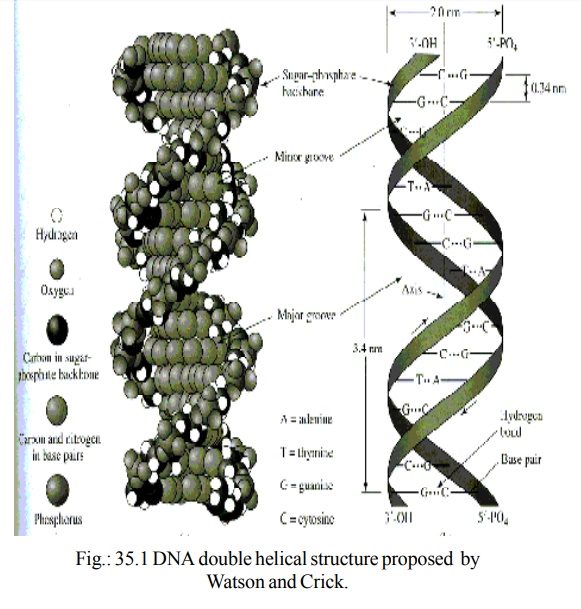
DNA Structure
In prokaryotes a chromosome is typically circular and in eu-karyotes linear threadlike molecule of DNA. DNA is a long linear poly-mer called as nucleic acid. This carries the information that can be passed from one generation to the next. DNA consists of a double chain of nucleotides arranged in a helix with the nucleotide base pairs held to-gether by hydrogen bonds (Figure 35.1)
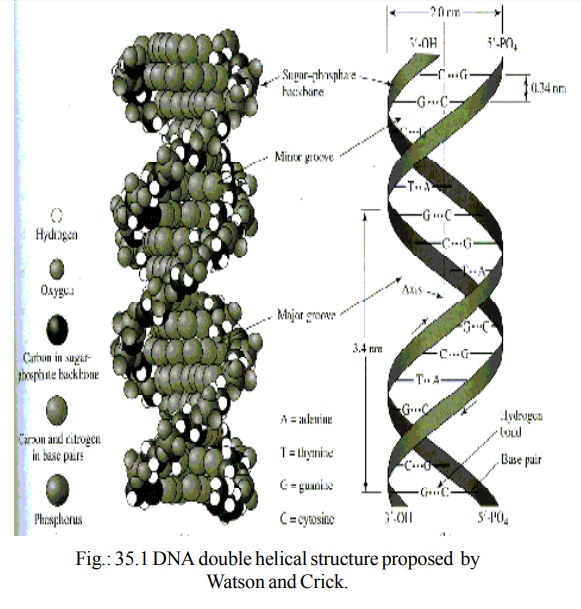
A nucleotide is composed of three chemical parts (Figure 35.2)
1. an aromatic cyclic compound containing carbon and nitrogen atoms
(nitrogenous base)
2. a five carbon carbohydrate in ring form ( aldopentose) one, two or
three phosphate groups.
3. one, two or three phosphate groups.
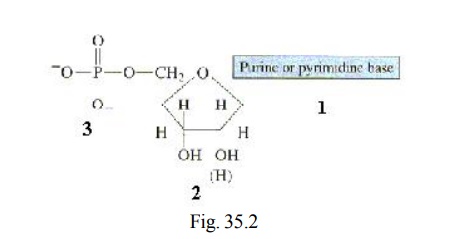
Structure of a nucleotide with the three fundamental units: purine or pyrimidine nitrogenous base(1), ribose or deoxyribose sugar (2) and a phosphate(3).
All the nitrogen bases in DNA and RNA are derivatives of 2-heterocyclic compounds purine and pyrimidine. The purine in DNA are adenine (A) and guanine (G) and pyrimidines are cytosine (C) and Thymine (T). The purine in RNA are adenine (A) and Guanine (G) and the pyrimidines are cytosine (C) and uracil (U) (Figure 35.3)
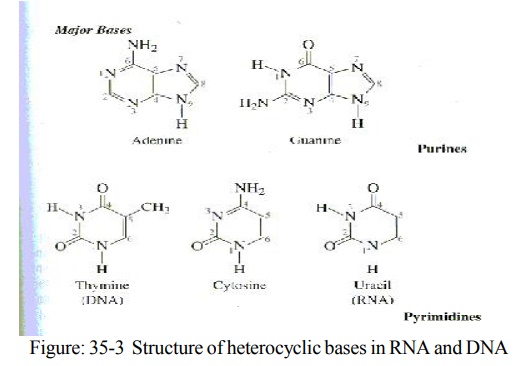
The type of sugar present in DNA is 2-deosyribose and Ribose sugar in RNA (figure 35.4) The aldopentoses in RNA and DNA.

The nitrogen base is linked to position one on the pentose ring by a glycosidic band from N1 of pyrimidines and N9 of purines. A base linked to a suar is called nucleoside Fig. 35.5.
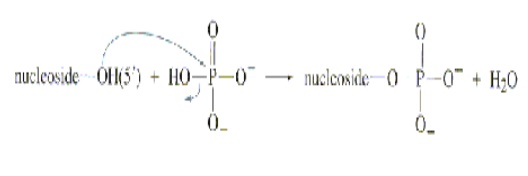
A nucleotide containing purine or pyrimidine linked to a carbohydrate by an N-glycosidic linkage
When a phosphoryl group is linked to a carbohydrate hydroxyl group on a nucleoside, it is called as a nucleotide
Nucleotides form the basis for the consruction of nucleic acids. The nucleotides are linked together into a polynucleotide chain by back-bone consisting of an alternating series of sugar and phosphate resi-dues (Figure. 35.6)
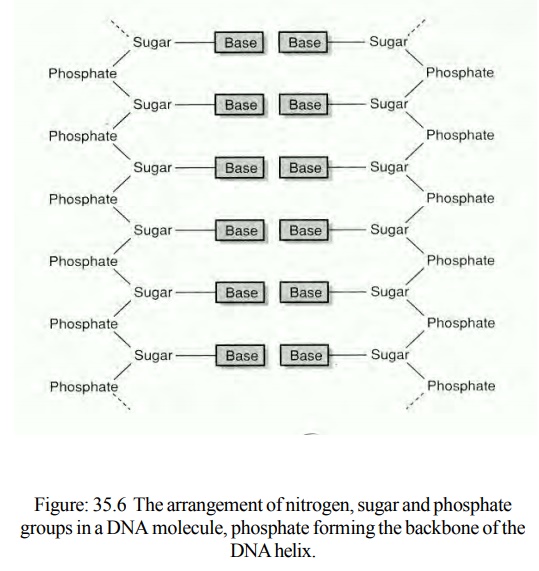
X-ray crystallographic studies of DNA molecule by W.T.Astbury, Winkins and Rosalind Franklin demonstrated that DNA was a helical structure with a diameter of 20Ă… and has a complete turn of about 34Ă…. James Watson and Frederic Crick utilized the X-ray crystallo-graphic studies of Franklen and constructed a model for DNA. Watson and Crick published their observation about the structure of DNA in the scientific journal Nature. Wilkins and his colleagues also presented their X-ray evidence for the DNA in the same issue.
Watson and Crick published the DNA structure in 1953. the characteristic feature of the DNA double helix are as follows:
1. The two strands are antiparallel, i.e., they run in opposite direc-tions. One strand has phosphodiester linkage in 3’- > 5’ direction, while the other strand has phosphodiester linkage in just reverse or 5’- > 3’ direction.
2. The coiling of the double helix is right handed and a complete turn occurs every 34 Ă….
3. The two long polynucleotide chains are coiled around a central axis, forming a right-handed double helix.
4. The adjacent deoxyribonucleotides are joined in a chain by phospho diseter bonds which links the 5’ carbon of the deoxyribose of one mononucleotide unit with the 3’carbon of the deoxyribose of the adjacent mononucleotide.
The bases of both chains are flat structures, lying perpendicular to the axis and are 3-4 Ă… apart. The nitrogenous bases of opposite chains are paired to one another by the formation of the hydrogen bonds.
The helix has two external grooves, alternating larger major grooves and smaller minor grooves, which are apparent along the axis. Both of these grooves are large enough to allow protein molecules to come in contact with the bases.
The base pairing is one of the most genetically significant feature of the model. In 1950, Erwin Chargaff discovered the equivalance rule which suggested that the amount of A equaled to T and that of G to C. Watson and Crick realized that A pairs with T and G pairs with C. Adenine forms two hydrogen bonds with thymine and guanine forms three hydrogen bonds with cytocine

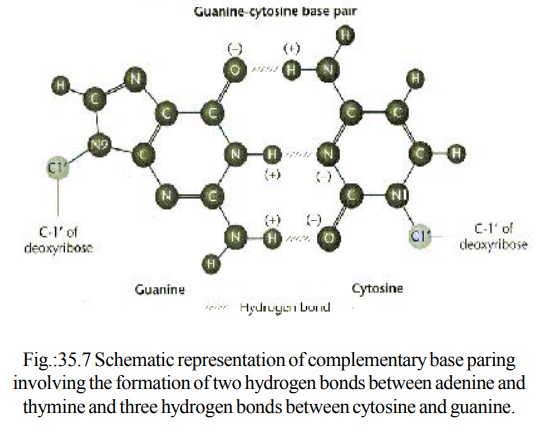
The hydrogen bond provides chemical stability essential to hold the two chains together. The specific A equal to T and C equal to G base pairing is the basis for the complementarity concept. This complementarity concept is very important in the process of DNA rep-lication and gene expression.
In recognization of their work leading to the double-helix model Nobel prize was awarded in 1962 to Watson, Crick and Wilkins. Nobel prize was not awarded to the contribution of Rosalind Franklin, be-cause, the award is not given posthumously. Since she died in 1958 at the age of 37, making her contributions ineligible for consideration.
Related Topics